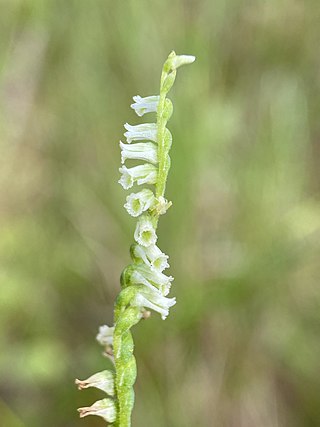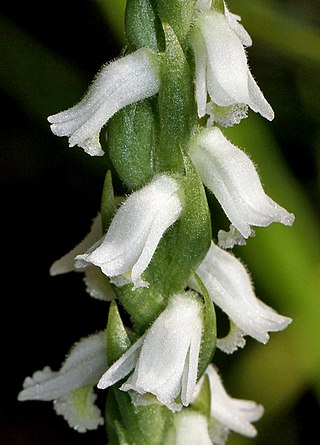
Orchids are plants that belong to the family Orchidaceae, a diverse and widespread group of flowering plants with blooms that are often colourful and fragrant. Orchids are cosmopolitan plants that are found in almost every habitat on Earth except glaciers. The world's richest diversity of orchid genera and species is found in the tropics.

Ophrys apifera, known in Europe as the bee orchid, is a perennial herbaceous plant of the family Orchidaceae. It serves as an example of sexually deceptive pollination and floral mimicry, as well as of a highly selective and highly evolved plant–pollinator relationship.

Centaurea is a genus of over 700 species of herbaceous thistle-like flowering plants in the family Asteraceae. Members of the genus are found only north of the equator, mostly in the Eastern Hemisphere; the Middle East and surrounding regions are particularly species-rich. In the western United States, yellow starthistles are an invasive species. Around the year 1850, seeds from the plant had arrived to the state of California. It is believed that those seeds came from South America.

Spiranthes is a genus of orchids in the subfamily Orchidoideae. They are known commonly as ladies tresses, ladies'-tresses, or lady's tresses. The genus is distributed in the Americas, Eurasia, and Australia. The genus name Spiranthes is derived from the Greek speira ("coil") and anthos ("flower"), and was inspired by the spirally arranged inflorescence.

Spiranthes spiralis, commonly known as autumn lady's-tresses, is an orchid that grows in Europe and adjacent North Africa and Asia. It is a small grey-green plant. It forms a rosette of four to five pointed, sessile, ovate leaves about 3 cm (1.2 in) in length. In late summer an unbranched stem of about 10–15 cm (3.9–5.9 in) tall is produced with approximately four sheath-shaped leaves. The white flowers are about 5 mm (0.20 in) long and have a green spot on the lower lip. They are arranged in a helix around the upper half of the stalk. The species is listed in Appendix II of CITES as a species that is not currently threatened with extinction but that may become so. Autumn lady's-tresses are legally protected in Belgium and the Netherlands.

Spiranthes romanzoffiana, commonly known as hooded lady's tresses or Irish lady's-tresses, is a species of orchid. Collected by Chamisso during the Romanzov expedition it was described by him in 1828 and named for Count Nikolay Rumyantsev who financed the expedition. This orchid is native to North America, Ireland and the British Isles.

Spiranthes parksii, the Navasota ladies' tresses, is a species of orchid that is endemic to Texas, United States. The flower was first discovered in 1945 and was first described by Donovan Stewart Correll in his 1950 book, Native Orchids of North America North of Mexico.

Spiranthes cernua, commonly called nodding lady's tresses, or nodding ladies' tresses, is a species of orchid occurring from Maritime Canada to the eastern and southern United States. As the common name suggests cernua means "nodding", or "bowed" in Latin.

Clematis socialis is a rare species of flowering plant in the buttercup family known by the common name Alabama leather flower. It is native to the US states of Alabama and Georgia, where it is known from only five populations. The species is seriously threatened by habitat destruction. It is a federally listed endangered species.

Spiranthes delitescens is a rare species of orchid known by the common names reclusive lady's tresses, Canelo Hills lady's tresses, and Madrean lady's tresses. It is native to Arizona in the United States, where there are only four occurrences. It is threatened by the loss and degradation of its habitat. It is a federally listed endangered species of the United States.

Spiranthes magnicamporum, commonly called the Great Plains lady's tresses, is a species of orchid that is native to North America. It is primarily native in the Great Plains, but there are outlying populations in the east in areas of former natural grassland, such as the Black Belt prairies of the Southeast. It is found in both fens and wet and dry prairies, often in calcareous soil.

Spiranthes odorata, marsh lady's tresses or common lady's tresses, is a species of flowering plant in the orchid family, native to the southeastern United States, from Texas eastwards and northwards to Delaware. It grows in moist, partially shaded environments with acidic or neutral soil.

Spiranthes australis, commonly known as austral ladies tresses, is a species of orchid that grows from southern Caspian Sea and Himalayan Mountains to the South-West Pacific and north throughout Japan. It has up to about ten leaves at the base of a flowering stem with up to sixty small pink and white flowers spirally arranged around it.

Spiranthes lucida, the shining ladies'-tresses, is a species of orchid native to northeastern North America.

Spiranthes incurva, the Sphinx ladies' tresses, is a species of flowering plant in the family Orchidaceae. This orchid is native to the upper Midwest and Great Lakes Basin of North America. The species was originally described as Ibidium incurvumJenn. in 1906. Long treated as part of a sensu latoSpiranthes cernua, the species complex was reevaluated and Spiranthes incurva reestablished as a separate species in 2017. Spiranthes incurva is an ancient natural hybrid of S. cernuasensu stricto and S. magnicamporum.

Spiranthes niklasii, Niklas' ladies' tresses, is a terrestrial orchid nearly endemic to the Ouachita Mountains in Arkansas and Oklahoma with a few other known populations.

Spiranthes perexilis, the languid ladies’-tresses, is a species of orchid native to California and Oregon.

Spiranthes eatonii, commonly known as Eaton's ladies' tresses is a terrestrial orchid endemic to the United States, closely related to or a variation of Spiranthes lacera.

Spiranthes triloba, the panther ladies' tresses is a terrestrial orchid endemic to Florida.



















